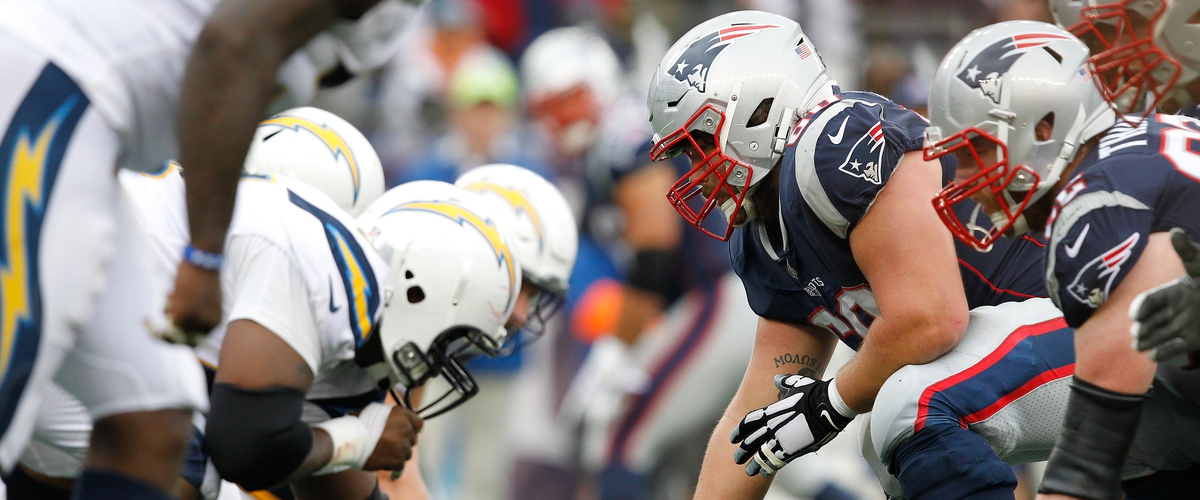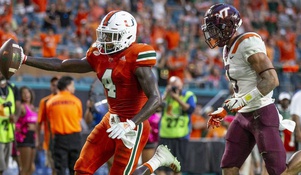Putting It All on the Lines

The fate of the Patriots’ championship aspirations rests on the lines. The offensive and defensive lines. How far New England goes will depend heavily on the significant improvement of these units.
Let’s be honest here. Both units were mediocre, at best, in 2017. That’s putting it nicely for the defensive line. And while the team was good enough to be within a few plays of winning the franchise’s sixth championship and establishing a second Patriots dynasty, the short-comings were eventually exploited.
Head coach Bill Belichick took an aggressive approach to improve the offensive line. Losing LT Nate Solder could hurt, but Belichick traded for Trent Brown and drafted Isaiah Wynn with New England’s first 2018 draft pick.
Brown comes in with a reputation for being one of the best pass blockers at right tackle in 2017. During training camp Brown has flipped to the blind side. It’s an experiment that has looked very good in the preseason.
If Brown doesn’t work out, then the Patriots might have a problem. Wynn tore his Achilles in the second preseason game and will miss the 2018 season. Depth behind Brown is unproven, unless LaAdrian Waddle can fill in at either tackle spot (moving Marcus Cannon to the left would concern me).
The 2018 edition of the O-line needs to be better than the 2017 version. Last year’s unit ranked first overall by Football Outsiders in run blocking but dropped to 13th in pass protection. They allowed 35 sacks last year, putting QB Tom Brady tied for ninth most in the league.
That was more than double what Brady had in 2016 (15 in 12 games played) and fourth most in a season. He’s 41-years-old now. The Patriots don’t want Brady taking a beating in ’18.
One way to reduce Brady’s pounding will be to lean on the O-line to run the ball more. New England ran the ball 43 percent of the time in 2017. Football Outsiders ranked the Patriots offensive line first overall in adjusted line yards in 2017. If the unit can open holes like it did last year, then there’s no reason not to pound the rock more with a versatile backfield and reduce the chances for opposing pass rushers pin their ears back.
Then again, Brady wouldn’t have to drop back to pass so much if New England’s pass rush could consistently harass the quarterback.
The D-line was at their most non-existent during the playoffs. They were responsible for raising Jacksonville Jaguars QB Blake Bortles’ BMI in the first half of the AFC Championship due to inactivity. Bortles’ lounging only came to an end because then-defensive coordinator Matt Patricia dialed up the blitzes in the second half.
And in Super Bowl LII the pass rush failed to sack Philadelphia Eagles QB Nick Foles once. Pro Football Focus rated New England’s pass rush as the worst in the NFL. The defense confirmed that at the worst possible time.
Of New England’s 42 sacks last year, 17 came from the defensive line (if Eric Lee is classified as a linebacker). The Patriots haven’t had a player with a double-digit sacks season since DE Chandler Jones had 12.5 in 2015. In the two years since being traded, Jones totaled 29 sacks with the Arizona Cardinals. New England’s leader in sacks the past two seasons is DE Trey Flowers with 13.5. Flowers needs help.
Assistance won’t come from the 2018 draft, as the Patriots didn’t select a pass rusher. But New England could see a breakout season from Deatrich Wise Jr. As a reserve the former Arkansas Razorback was third on the team with five sacks. According to daily reports from training camp, Wise had a strong camp.
DE Adrian Clayborn was New England’s big free agent addition, and he has looked great through two preseason games. Just understand the Patriots need Clayborn for all 16 games and the playoffs, not just one week (Six of his 9.5 sacks came in one game against the Dallas Cowboys).
LB Kyle Van Noy claims the defense will be “sneaky quiet” good, but the secondary was very good last year. Too often they were left hanging as quarterbacks were able to wait, sometimes several seconds, for receivers to get open.
The pass rush had to rely on blitzes to create pressure, when it worked. If the Patriots could apply pressure with just the D-line, we wouldn’t have the “If only Bill Belichick played Malcolm Butler…” theory still lingering.
Getting to the quarterback wasn’t the only problem. Opponents averaged 114.8 yards per game on the ground in 2017 as New England’s run defense struggled. 10 times opponents gained more than 100 yards in a game. Eight times the Patriots allowed 120 yards or more. The 4.7 yards per carry allowed tied for next to last in the league.
To help address the leak, New England let Alan Branch and Ricky Jean-Francois go and traded for DT Danny Shelton to anchor the middle. He joins the rotation with Lawrence Guy and Malcom Brown to clog the inside and keep the linebackers clean to make plays.
We won’t know if the changes will be enough to get dramatic improvements from both units. We do know they will be tested in the first four games.
The Houston Texans will bring a healthy defense and a Deshawn Watson-led offense that nearly upset the Patriots at Gillette Stadium last season. The Jaguars dominated New England in the first half of the AFC Championship and will have that loss fresh in their minds when they meet again in week two.
Detroit Lions head coach Patricia will use any inside knowledge of his former team to get any edge for his Lions. And anything is possible whenever the Patriots travel to Miami to play the Dolphins.
The lines have two more preseason games to develop chemistry and find the best combinations before the games count. How the Patriots start matters, but in Belichick fashion, how they finish matters more. If the offensive and defensive lines improve as the season progresses, the flaws could become strengths.
If not, another season of below average performances by the lines could lead to another season that ends in disappointment.
Questions? Comments? Send to [email protected]. Follow @NE_Arena on Twitter.







